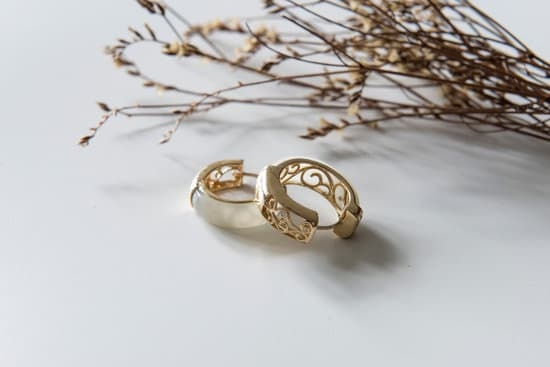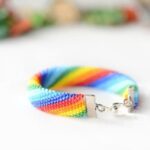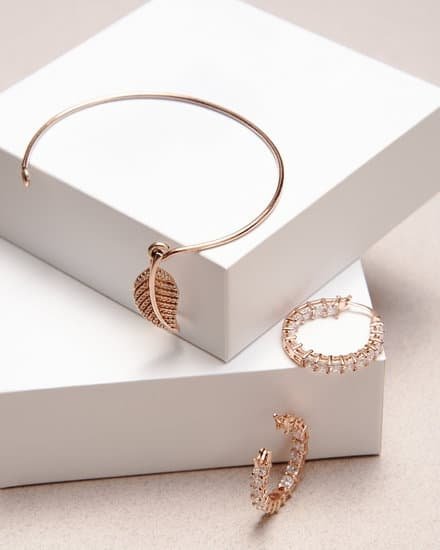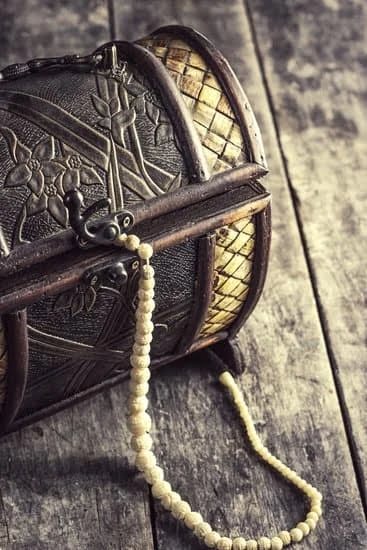Are you interested in learning how to turn gold jewelry into silver at home? While gold and silver are both precious metals, some people may find themselves no longer satisfied with the color of their gold jewelry and are exploring ways to change its appearance. This article will guide you through the process of transforming your gold jewelry into beautiful silver pieces, allowing you to give new life to your existing accessories.
Gold and silver jewelry have distinct differences beyond just their color. Gold is typically denser and more malleable than silver, making it easier to work with. On the other hand, silver has a brighter luster and is more affordable than gold. Understanding these differences is crucial when deciding if you want to undergo the transformation from gold to silver as it will affect the overall look and feel of your jewelry.
In order to successfully turn your gold jewelry into silver, you will need specific tools and materials. It’s important to gather everything needed before starting the process in order to ensure a smooth transition.
Additionally, taking necessary precautions and safety measures when working with chemicals is crucial for protecting yourself and achieving successful results. In the following sections, we will delve deeper into these aspects in order to provide you with a comprehensive understanding of how to carry out this transformation at home.
Tools and Materials Needed for the Transformation
Turning gold jewelry into silver at home requires specific tools and materials to achieve the desired results. While the process may seem daunting, having the right items on hand can make the transformation smoother and more successful. Here are the essential tools and materials you will need:
- Gold Jewelry Pieces
- Jewelry Cleaner
- Silver-Plating Kit
- Pumice Powder or Rouge Compound
- Clean Cloth or Microfiber Towel
- Gloves and Safety Goggles
- Cleaning Brush or Cotton Swabs
- Polishing Cloth
When preparing for the transformation, ensure that you have all these items readily available to streamline the process.
Now, let’s take a closer look at some of these tools and materials. The silver-plating kit is crucial as it contains the necessary chemicals for coating your gold jewelry with a layer of silver. Additionally, pumice powder or rouge compound will help in removing any existing coatings or tarnishes from the gold pieces before plating them with silver. Gloves and safety goggles are important for protecting yourself from any potential hazards when working with chemicals.
Lastly, it’s essential to have a polishing cloth on hand to give your newly transformed silver jewelry a clean and shiny finish once the plating process is complete. By having these tools and materials ready, you can proceed with confidence in turning your gold jewelry into stunning silver pieces right in the comfort of your own home.
Precautions and Safety Measures
Turning gold jewelry into silver at home involves using chemicals and materials that can be hazardous if not handled properly. It is important to take the necessary precautions and safety measures to ensure your well-being and the success of the transformation. Here are some tips on how to stay safe while working on this DIY project:
1. Protective Gear: Ensure that you have the right protective gear such as gloves, goggles, and a face mask before you begin the process of turning your gold jewelry into silver. This will help protect your skin, eyes, and respiratory system from any potential harm caused by the chemicals involved.
2. Well-Ventilated Area: Work in a well-ventilated area to prevent inhaling toxic fumes. If possible, perform the transformation process outdoors or in a room with open windows or good airflow. Proper ventilation is essential for your safety and overall health.
3. Follow Instructions: Read and follow the instructions on the chemicals and materials you are using carefully. Be mindful of any warnings or precautions provided by the manufacturers. Keep these substances away from children, pets, and food to avoid accidental ingestion or exposure.
4. Safe Disposal: Dispose of any leftover chemicals and used materials responsibly according to local guidelines for hazardous waste disposal. Do not pour them down drains or throw them in regular trash bins as they may harm the environment.
By taking these safety measures seriously, you can minimize the risks associated with working on a DIY project like turning gold jewelry into silver at home. It is important to prioritize safety while undertaking any kind of chemical process to achieve successful results without compromising your health or well-being.
Step-by-Step Guide to Turning Gold Jewelry Into Silver
Turning your gold jewelry into silver at home is a unique and creative way to update your accessories collection without having to spend a lot of money. With the right tools and materials, this DIY project can be accomplished with ease. Once you have mastered the technique, you can transform many of your favorite gold pieces into beautiful silver jewelry.
Before you begin, it’s important to gather all the necessary tools and materials for the transformation. You will need a clean soft cloth, a polishing cloth, silver plating solution, a small plastic or glass container, latex gloves, and a soft brush. It’s essential to work in a well-ventilated area and avoid inhaling fumes from the silver plating solution. Additionally, make sure to read and follow all safety precautions on the product label.
To start the process of turning your gold jewelry into silver, first clean the piece thoroughly using soap and water. Then dry it with a soft cloth before applying the silver plating solution. Submerge the jewelry in the solution for the recommended amount of time as indicated on the product instructions. Once it has reached the desired color and tone, carefully remove it from the solution using gloves and rinse it with water before drying it completely.
After transforming your gold jewelry into silver, it’s crucial to clean and polish it regularly to maintain its appearance. Use a polishing cloth to remove any tarnish or dullness that may occur over time. With proper care and maintenance, you can preserve the silver finish on your transformed jewelry for years to come.
Tips for Achieving the Best Results
When attempting to turn gold jewelry into silver at home, it is important to follow some key tips to ensure the best possible outcome. Firstly, it is essential to thoroughly clean the gold jewelry before beginning the transformation process. Any dirt, tarnish, or oils on the surface can interfere with the silver-plating process and result in an uneven or patchy finish. Use a gentle jewelry cleaner and a soft cloth to remove any impurities from the gold jewelry.
Another important tip is to carefully follow the instructions for the silver-plating solution or kit being used. Different products may have varying application methods, so it is crucial to read and understand the manufacturer’s guidelines before proceeding. Additionally, be sure to apply an even layer of the silver-plating solution to achieve a uniform and professional-looking finish. Taking your time and working methodically will yield better results than rushing through the process.
Lastly, consider using protective coatings or sealants once the silver-plating process is complete. This can help preserve the newly transformed jewelry and prevent premature tarnishing or wear. Be sure to select a coating product that is safe for use on skin-contact items like jewelry, and follow the application instructions carefully for best results.
| Tips | Details |
|---|---|
| Clean Jewelry | Thoroughly clean gold jewelry before starting |
| Follow Instructions | Read and understand guidelines for silver-plating solution or kit |
| Use Protective Coatings | Consider applying sealants to preserve newly transformed jewelry |
Cleaning and Polishing the Transformed Jewelry
Once you have successfully transformed your gold jewelry into silver, it is essential to clean and polish the pieces to achieve a stunning, shiny finish. This step is crucial in ensuring that your jewelry looks as good as new and maintains its luster over time. Here’s a step-by-step guide on how to properly clean and polish your newly transformed silver jewelry.
Cleaning Process
Before polishing, it is important to thoroughly clean the jewelry to remove any dirt, oil, or residue from the transformation process. You can use a mild soap and warm water to gently clean the pieces, making sure to rinse them well afterwards. Be cautious not to scrub too hard, especially if there are delicate gemstones or intricate details on the jewelry.
Polishing Techniques
After cleaning, you can begin the polishing process using a soft, lint-free cloth and a specialized silver polish. Gently rub the polish onto the surface of the jewelry in circular motions, taking care not to over-polish and damage the metal. For hard-to-reach areas or intricate designs, you can use a soft-bristled brush for more targeted polishing.
Final Touches
Once you are satisfied with the shine and finish of your silver jewelry, give them one final rinse with water and dry them thoroughly with a clean cloth. It is recommended to avoid using paper towels for drying as they may leave behind lint or scratches on the metal. After this final step, your once-gold pieces should now be gleaming and ready to be worn with pride.
By following these simple cleaning and polishing techniques, you can ensure that your newly transformed silver jewelry looks its best at all times.
How to Maintain the Silver Finish
Maintaining the silver finish on your jewelry is crucial to ensure its longevity and continued luster. After successfully transforming your gold jewelry into silver, it’s important to follow proper maintenance techniques to keep them looking their best for a long time.
Proper Storage
One of the key factors in maintaining the silver finish on your jewelry is proper storage. When not wearing your silver-plated jewelry, store them in a cool, dry place away from direct sunlight. Storing them in airtight bags or containers can also help prevent tarnishing.
Gentle Cleaning
Regular cleaning is essential for maintaining the silver finish. Use a soft, non-abrasive cloth to gently wipe the jewelry after each wear to remove any oils or dirt that may have accumulated. Avoid using harsh chemicals or abrasive materials as they can strip off the silver plating.
Avoid Exposure to Harsh Substances
To maintain the silver finish on your jewelry, it’s important to avoid exposing them to harsh substances such as chlorine, bleach, or strong cleaning agents. These can cause the silver plating to corrode and deteriorate over time.
By following these simple maintenance tips, you can ensure that your DIY silver-plated jewelry retains its lustrous finish for years to come. Remember that proper care and maintenance are crucial for preserving the beauty of your newly transformed pieces.
Potential Risks and Downsides of DIY Silver-Plating
When it comes to DIY silver-plating, there are some potential risks and downsides that need to be considered before attempting to transform gold jewelry into silver at home. One of the main risks is that the process involves working with chemicals and electroplating solutions, which can be hazardous if not used properly. These substances can cause skin irritation, eye damage, and respiratory issues if proper safety precautions are not taken.
Another downside of DIY silver-plating is the possibility of damaging the original gold jewelry in the process. If the jewelry is not properly prepared or if the electroplating process goes wrong, it could result in irreversible damage to the item. Additionally, improper handling of the tools and materials needed for the transformation could also lead to accidents or injuries.
It is also important to note that DIY silver-plating may not always yield professional-quality results. Without proper training and experience, it can be challenging to achieve a flawless silver finish on gold jewelry. This means that despite your best efforts, the transformed jewelry may not look as polished and refined as professionally silver-plated pieces. Therefore, it’s essential to manage expectations and understand that DIY silver-plating has its limitations.
Alternatives to DIY Silver-Plating
If you’re considering transforming your gold jewelry into silver at home, but are concerned about the risks and downsides of DIY silver-plating, there are alternative options to achieve the same result without the potential negative outcomes. One popular alternative is to visit a professional jeweler who offers silver-plating services. This option ensures that the transformation is done correctly and safely, reducing the risk of damaging your precious jewelry.
Another alternative to DIY silver-plating is to seek out specialized silver plating kits that are specifically designed for at-home use. These kits often come with detailed instructions and all the necessary tools and materials needed to successfully achieve the transformation. By using a pre-packaged kit, you can mitigate some of the risks associated with attempting to silver-plate your jewelry using household items.
If you’re seeking a completely different approach to achieving the look of silver jewelry without physically altering your gold pieces, consider investing in high-quality silver-tone jewelry or accessories. This provides an easy and low-risk way to incorporate the aesthetic of silver into your collection without compromising your existing gold jewelry. Additionally, purchasing new silver pieces allows you to maintain the value and integrity of your original gold items while still enjoying the beauty of silver jewelry.
Furthermore, another alternative is exploring DIY techniques such as using metallic paint or nail polish in a metallic color close to sterling silver. While these methods may not provide a permanent or authentic finish like actual silver-plating, they offer a quick and easy way to temporarily change the appearance of your gold jewelry without making any permanent alterations. Always remember that experimenting with at-home alternatives requires caution and thorough research to avoid any undesirable results.
Conclusion
In conclusion, attempting to turn gold jewelry into silver at home can be a challenging and potentially risky endeavor. While the process may seem straightforward, it requires specific tools, materials, and safety precautions to ensure a successful transformation. Additionally, achieving the desired silver finish and maintaining it can be tricky without professional equipment and expertise.
Despite the potential risks and downsides of DIY silver-plating, some individuals may find it worth the effort. For those who enjoy DIY projects and have a passion for jewelry making, the satisfaction of transforming gold pieces into silver may outweigh the challenges involved. However, it’s essential to carefully weigh the potential risks and downsides before deciding whether to pursue DIY silver-plating.
Ultimately, for individuals who are not comfortable or experienced in DIY techniques, there are alternatives to consider. These alternatives include seeking out professional jeweler services or investing in high-quality silver jewelry. By exploring these options, individuals can achieve their desired look without taking on the potential risks and challenges associated with turning gold jewelry into silver at home.
Frequently Asked Questions
Can You Turn Gold Jewelry Into Silver?
Turning gold jewelry into silver is not a simple process. Gold is a completely different metal than silver, and it’s not possible to convert one into the other. The only way to “turn” gold jewelry into silver would be to physically break down the gold and use that material to create something new out of silver.
How Do You Clean Gold Jewelry That Turns Silver?
When gold jewelry starts to turn silver, it could be due to tarnishing or wearing off of the gold plating. To clean such jewelry, you can use a mild soap and warm water, gently scrubbing with a soft brush. Another option is using a jewelry cleaning solution specifically designed for gold and silver.
How Do You Remove Gold Plating From Silver at Home?
Removing gold plating from silver at home can be done using a combination of techniques like polishing with a soft cloth, using chemical solutions like nitric acid or even professional electroplating equipment. It’s important to note that these methods will require care and precision and may not be suitable for everyone depending on their comfort level with handling chemicals or equipment.
If unsure, seeking professional help would be be advisable.

Welcome to my jewelry blog! My name is Sarah and I am the owner of this blog.
I love making jewelry and sharing my creations with others.
So whether you’re someone who loves wearing jewelry yourself or simply enjoys learning about it, be sure to check out my blog for insightful posts on everything related to this exciting topic!





